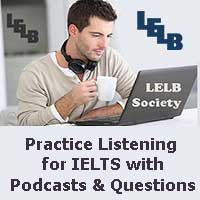Connectionism
Connectionism originated in the relativity well-established notion in psychology of ‘parallel processing. This was advanced by the work of the ‘parallel distributed processing’ (PDP) group held by Rumelhart and McClelland (1986).
The term “connectionism” refers in general to a form of cognitive modeling wherein cognitive processing is represented in terms that can be implemented by a mechanical device, i.e. by a computer programmed to carry out the processes.
The most influential emergentist model in SLA is connectionism. This views learners’ knowledge of language as a labyrinth of interconnections between ‘units’ that do not correspond to any holistic concepts of the kind we normally recognise.
Performance (i.e. information processing) involves the activation of the requisite interconnections; learning arises when, as a result of experience, the strength of the connections (i.e. ‘weights’) between units is modified. Connectionism affords a unified model of cognition, straddling the traditional competence/performance distinction (Plunkett, 1988).
A recent view of language acquisition comes from connectionism. Connectionists differ sharply from the Chomskyan innatists because they hypothesize that language acquisition does not require a separate ‘module of the mind’ but can be explained in terms of learning in general. Furthermore, connectionists argue that what children need to know is essentially available to them in the language they are exposed to (Lightbown & Spada, 2006)((Lightbown, P. M., & Spada, N. (2006). How languages are learned. Oxford: Oxford University Press.)).
All connectionist models consist of a set of interlinked elementary processing units, each of which computes a numerical activation value based on input received from other units to which it is connected. The input signal received from an individual unit is determined by the latter unit’s own activation value multiplied by a numerical strength known as a weight which is associated with the connection. A unit’s activation value is a function of the sum of input values to the unit. Typically, input to a network is achieved by imposing activation values on a series or ‘layer’ of units referred to as input units. This pattern of activation is then propagated through the net – perhaps, via layers of hidden units – until a pattern of activation values emerges at another set of units referred to as output units. The various layers of units act as the representation bearers within the system (Matthews, 1999).
The pattern of connectivity and associated weights within a network constitutes what the system ‘knows’. One of the most attractive features of connectionist systems is that there are a number of simple yet powerful learning procedures which enable the networks to change the weights within the system so that they eventually learn to respond in an appropriate manner to various forms of input (Matthews, 1999).
Connectionist models of language learning constitute one kind of emergentist account; the ‘competition model’.
Connectionism also adopts a ‘constructivist’ view of learning.

